Examples of Great and Poor Marketing
So, what can we learn from the success or failure of other businesses’ marketing campaigns?
The short answer? A lot.
We have found that the best way to understand what goes into great marketing is to study examples of it. To that end, here are some of our team’s favourite examples of mind-blowing marketing.
Before you read on, it is important that we preface these examples by acknowledging that some of these companies are big name brands. They may have massive marketing budgets—but we urge you not to be discouraged by this.
We are firm believers that size doesn’t matter (wink, wink) quite as much as many would have us believe (and yes, we’re still talking about budget).
Whether a marketing budget is in the millions or the hundreds, the fundamental tenets of great marketing remain the same:
- Be clear about who you are
- Be clear about what you are want to do
- know your audience
- Analyse and predict trends
- Know your strengths and weaknesses
- Know the strengths and weakness of your competitors
- Subvert to stand out
- Be bold Data is key to decision making
- Context is everything- understand your environment
- To that end, review and improve
- Plan for the worst, expect the best
Think About Connections, Not Budgets
When we think about great marketing, we always begin with a desire to stand out in a crowded room.
We at Murray Dare think that any business can make a significant dent in their market. Regardless of their size and budget.
In this chapter, you will discover that just as big-budget marketing campaigns can achieve success, they can also result in massive failure—proving that it’s not the size that matters, but what you do with it (honestly, still talking about budget, so get your mind out of the gutter!).
Here are a few gems we love.
DeadHappy’s Messaging & Branding
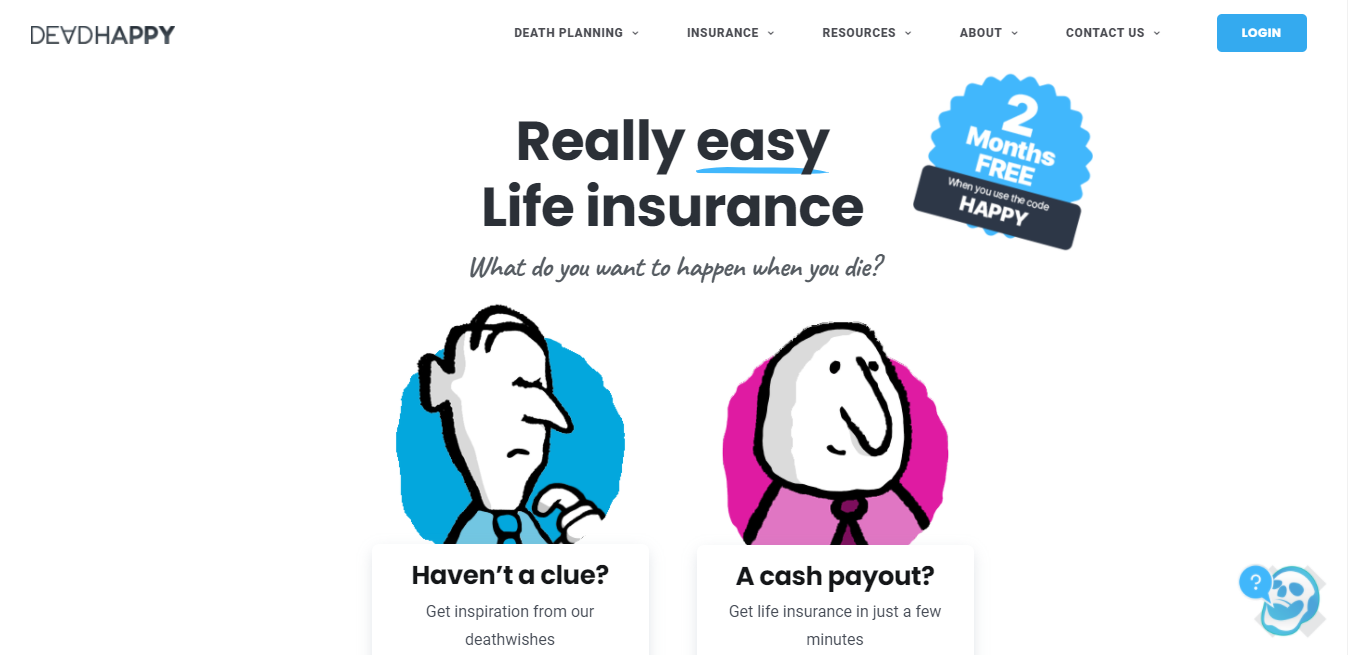
DeadHappy is a life insurance company that has cultivated significant popularity in recent years. Despite starting out as a small player in a market monopolised by brands like Aviva, Direct Line, and comparison sites like Compare the Market.
DeadHappy is an exceptional example of subversive marketing. Because it applies humour to a subject that we can all unanimously agree is pretty bleak: death.
Here’s a snippet of their website content:
We’ve created a whole new life insurance product, because traditional life insurance policies just aren’t good enough any more.
We’ve also created a way to help folks plan for what happens when they shuffle off this mortal coil. We call these deathwishes.
So, what do you want to happen when you die? Do you want Rick Astley to sing at your funeral, a bronze statue of yourself for the garden or perhaps send your mates on holiday? Your call.
Nobody likes making plans for their own death. It’s a generally depressing experience that many of us perceive as an unwelcome obligation. Which makes life insurance an especially tricky product to sell. By inviting your audience to think about their own death, you’re setting yourself up for failure.
DeadHappy makes no effort to avoid the presence of death in the product they are selling, as many life insurance providers do. But instead, embraces it fully and with a dark sense of humour to boot.
By taking a risk, subverting the dominant market approach, and embracing humour, DeadHappy have created a genuinely stand-out brand. One that has been especially successful on social media platforms.
With their modern approach, they have also effectively targeted a market demographic that rarely even considers the prospect of life insurance: millennials and adults in their early twenties.
Lemonade’s Website Design
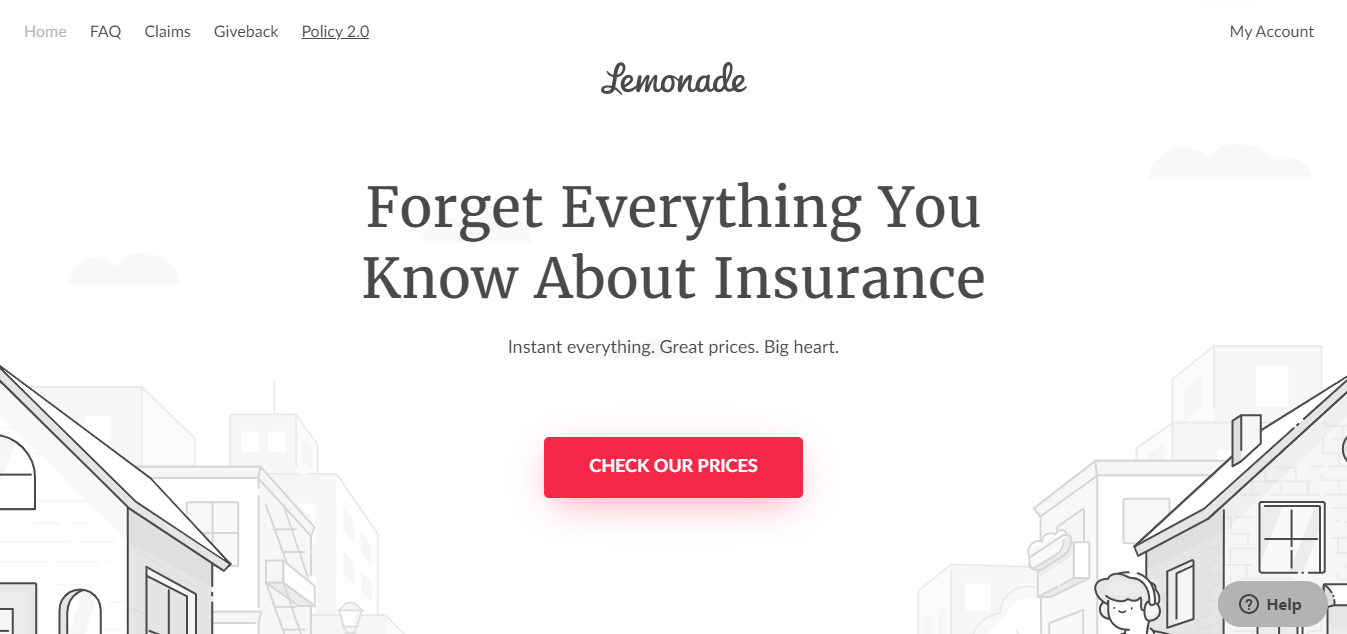
On the subject of insurance, Lemonade is also worth mentioning.
Lemonade’s strength is in its website design and branding, which take a minimalistic approach that is simple and positive. With its cartoon-like sketches, Lemonade keeps the tone of the website light. As well as avoiding the use of bright graphics that could distract from important content.
Lemonade’s design is largely monochromatic. When it does use colour, it features bright pink in splashes that draw your attention to essential calls-to-action.
Super simple. Highly effective.
Why did Lemonade take this route?
This branding decision was grounded in audience insights, and Lemonade’s awareness of its own strengths. When choosing an insurance provider, most of us are looking for simplicity and ease. We want a provider we can get set up with quickly and maintain with minimal effort.
Lemonade knows this and has created a site that reflects the simplicity they promise to provide; no flashy images or an overload of information—just a clean and authentic product, mirrored in their branding.
https://www.lemonade.com/de/en
The Always “Like A Girl” Campaign
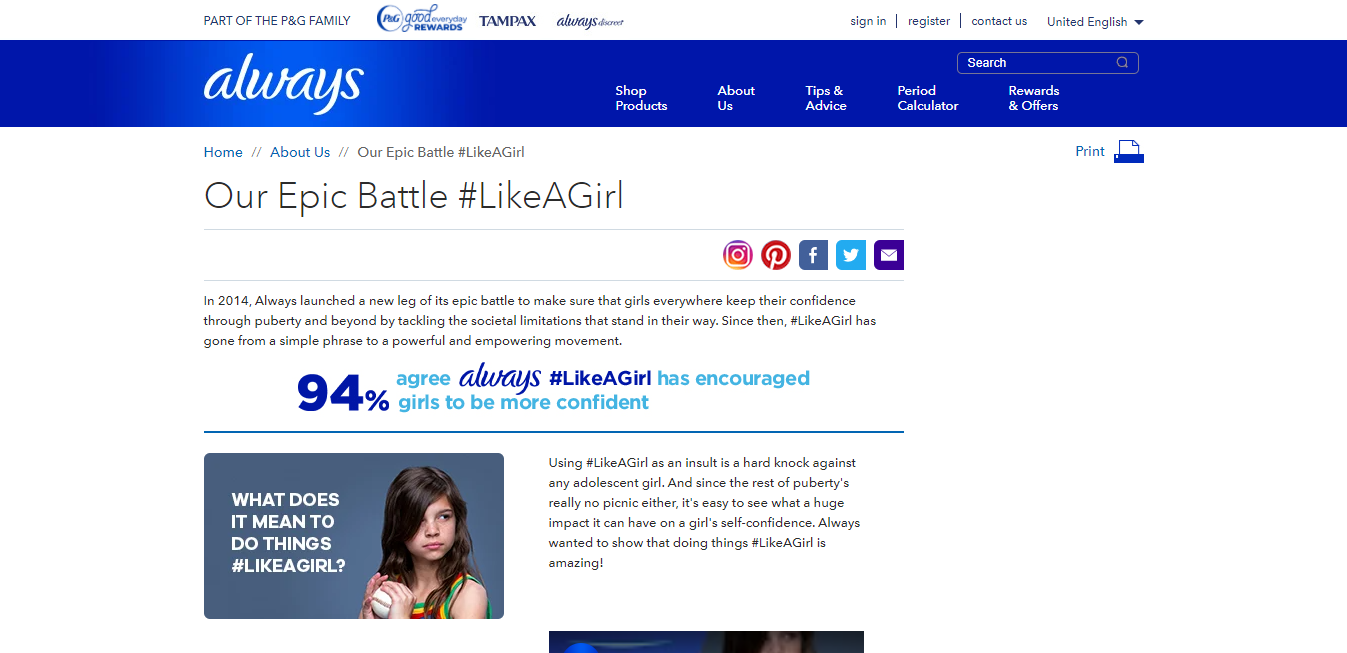
This highly influential campaign helped Always successfully overcome the challenge of increasing the popularity of their feminine-hygiene brand among a young audience.
This campaign was devised after Always lost much of its relevance with the 16 to 24 year old demographic.
While at face value the “Like A Girl” campaign might seem like a stroke of luck or a spark of genius, it was in fact grounded in extensive market research and analysis.
The Always team discovered that more than 50% of young girls quit playing sports when they hit puberty, as a result of a confidence crisis, which was the inspiration for this campaign.
This campaign’s achievements were extensive.
With their keen, data-driven insights into their audience, Always not only bolstered their popularity, but assisted in redefining the public’s perception of the phrase “like a girl”—firmly establishing their brand as one of female empowerment.
But why was this campaign so successful?
By understanding the thinking behind the “Like A Girl” campaign, we can gain key insights into why certain campaigns work and why others don’t.
Primarily, the “Like A Girl” campaign succeeded because it subverted the widespread, but damaging notion that being a girl translates to weakness and inability.
By addressing how and where this misguided assumption originated, Always undermined it. This in turn established Always as a pioneer of activism, a cultural disruptor, and as a company reinventing femininity for both their customers and their product.
Always’ originality sparked a discussion, which increased the visibility of their campaign.
Spotify’s “Thanks 2016, It’s Been Weird” Campaign
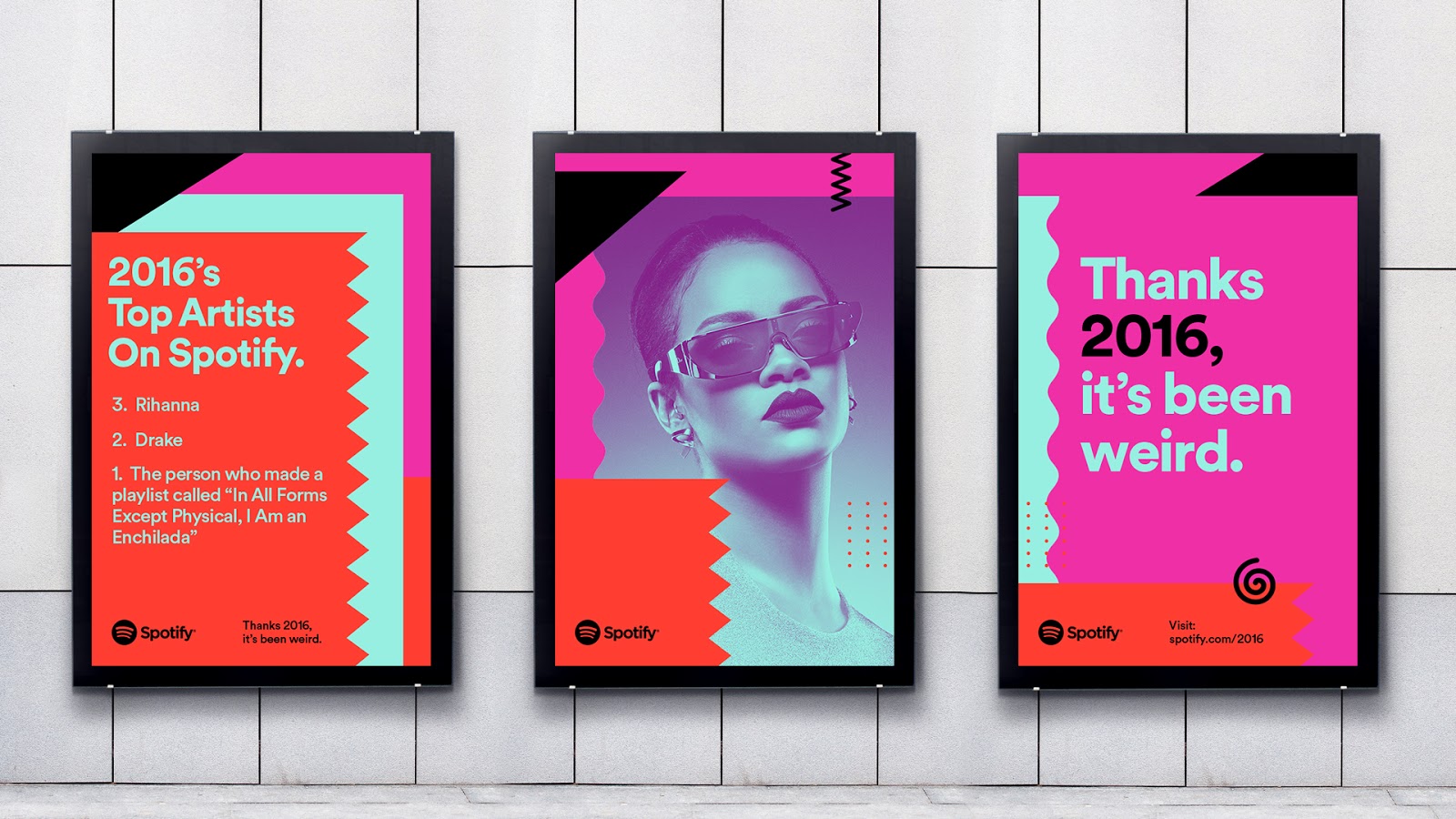
Spotify’s global campaign, which paid homage to the year 2016, was a monumental success—and it was entirely data-driven.
Despite fears that the increasing use of big data would be the nail in the coffin for creativity in marketing, Spotify was able to use big data innovatively to create real connection and a sense of shared experience.
In this campaign, Spotify used data on listening habits to personalise their approach to customers and mirror popular culture.
Spotify used humour to unite consumers behind a single experience that everyone had shared in; 2016. And in a year where division was rife, the emphasis on communal experience was well-received.

Pic’s Peanut Butter Content
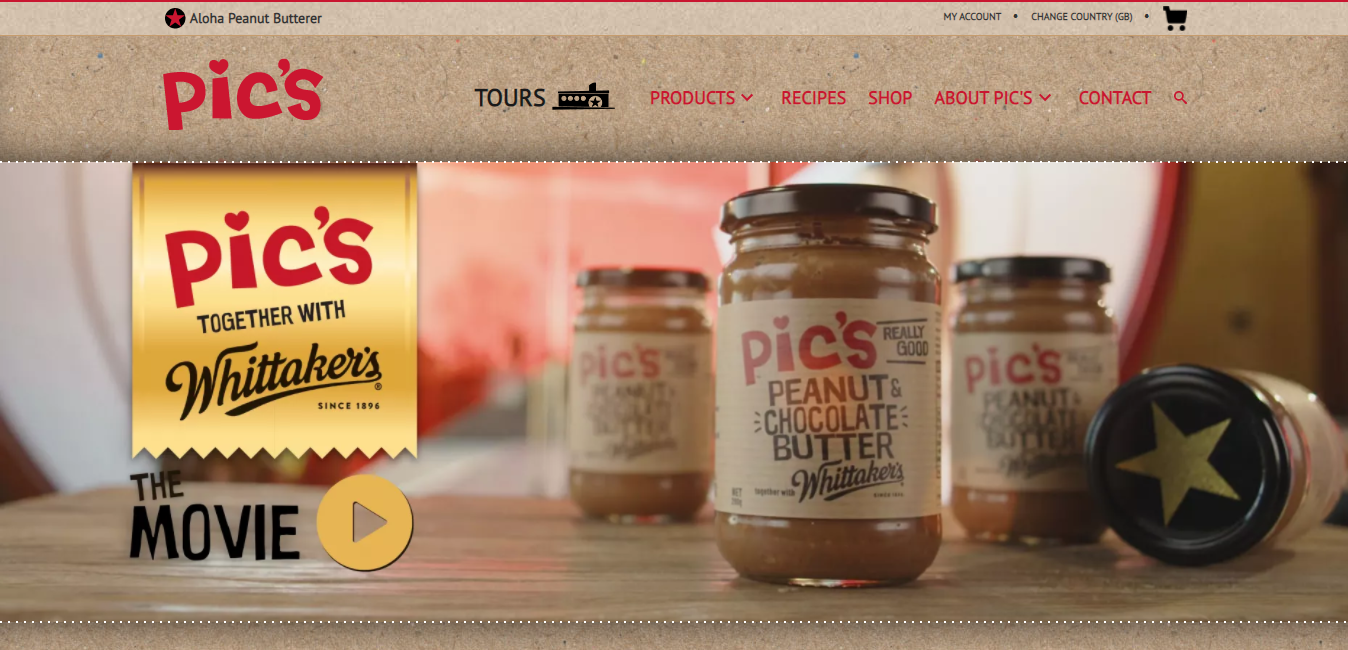
Pic’s Peanut Butter have a particular aptitude for content, and this is a strength they have taken full advantage of across both social media and their website recipe page.
On their recipe page, Pic’s Peanut Butter publishes recipes in which their products feature. The recipes are professionally photographed and very creative. Thus, establishing Pic’s Peanut Butter as a unique and authoritative source of content for lovers of baking and cooking.
Their recipe page provides the ideal conversion point for site visitors, as craving becomes a purchase.
What we love about Pic’s Peanut Butter’s approach to content is that it isn’t trying to sell peanut butter, per se. But the limitless recipes that can be made with their peanut butter and other products.
In devising their content strategy, Pic’s Peanut Butter recognised the limitation of their product; it only works as part of a wider recipe.
By emphasising the vast number of delicious recipes that can be made with their products, they lean into their strengths and effectively compensate for their weakness.
We challenge you to visit their recipe page without your mouth watering.
Smol’s Messaging
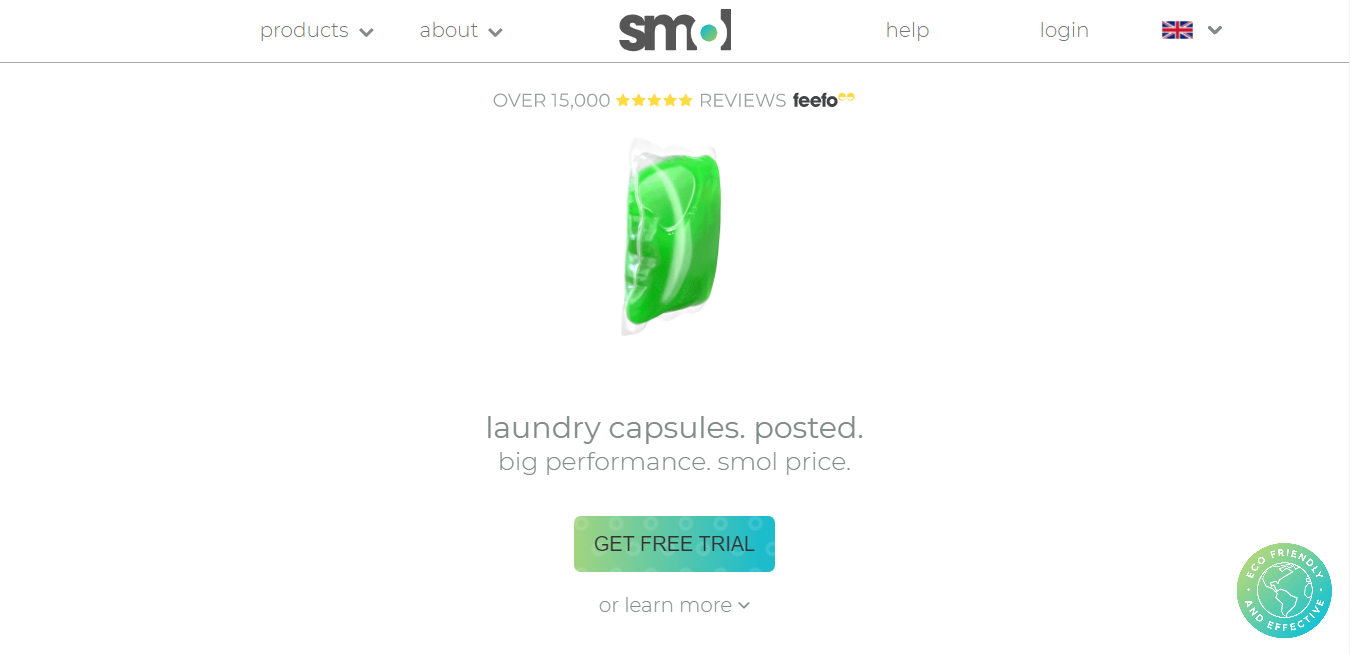 Smol’s laundry detergent sums up its unique selling point in just seven words, which provides us with everything we need to know about how Smol differs from other laundry detergent providers.
Smol’s laundry detergent sums up its unique selling point in just seven words, which provides us with everything we need to know about how Smol differs from other laundry detergent providers.
laundry capsules. posted.
big performance. smol price.
Simple, clean, and effective. Smol does not mince words or attempt to persuade you that their product is anything more than what it is: convenient, powerful, and budget-friendly.
Smol’s messaging makes it clear that they know themselves and their audience. Their value proposition is crystal clear and they are boldly taking on massive supermarket chains by cutting out the middleman and delivering straight to the customer’s door.
Ecologi’s Gamification
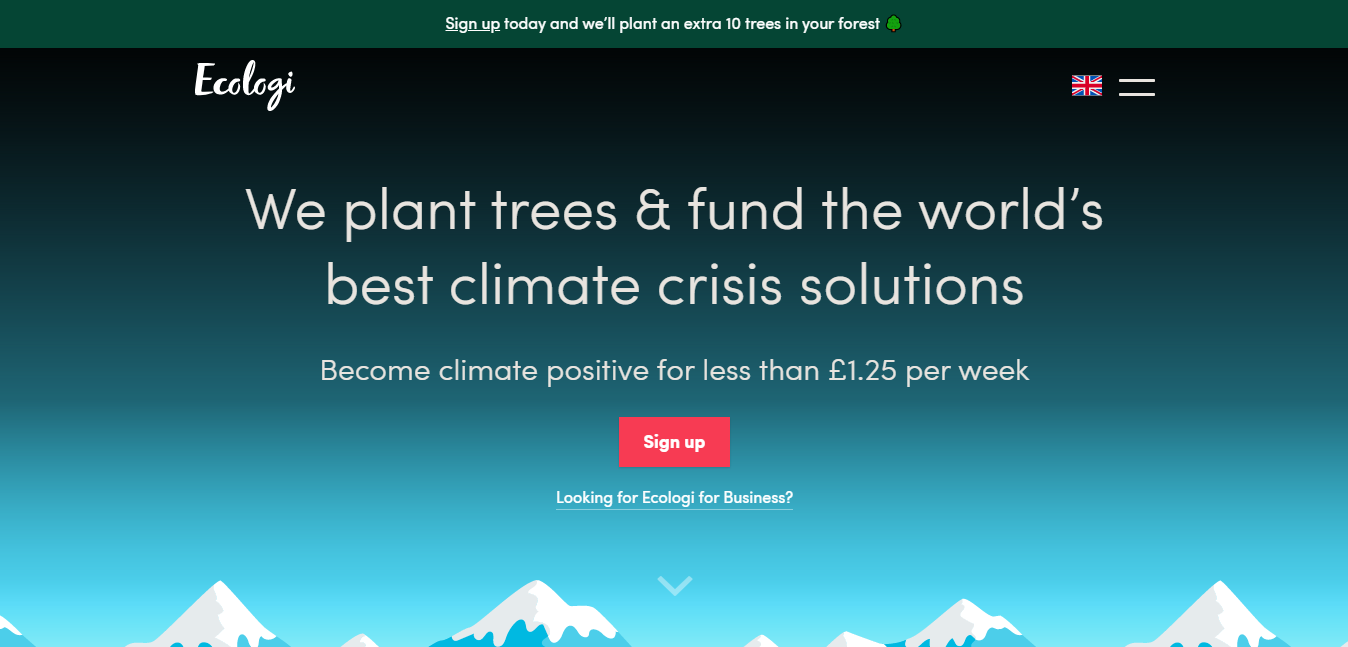
Ecologi is a company that offsets carbon emissions on behalf of its customers, for a small monthly subscription charge. As an individual or business, you can neutralise your impact on the environment. Therefore allowing you to live a fully climate positive lifestyle.
Ecologi gamifies the experience of mitigating your environmental impact by generating a personal, animated forest on your profile page. This forest shows the age and location of the trees they’ve planted on your behalf across the globe. As the trees get older, they turn from seedlings into full trees.
The Ecologi platform rewards you with badges for your involvement (i.e. “100 trees planted”, and “1 year climate positive”). Ecologi also shows you the equivalent of your carbon footprint reduction in terms of number of long-haul flights, metres squared of sea ice saved, and number of miles driven in a car.
Being able to visualise your impact in real terms is really motivating, and you can even benefit from having extra trees added to your forest when you refer someone new.
This approach is so effective that when we stumbled across Ecologi, we signed up ourselves!
Being able to download our climate positive certificates each month and seeing the details of the projects we’ve supported gives us a real sense of pride and achievement.
This gamified approach to giving is an extremely effective marketing initiative that turns parting with your money into a rewarding and high-value experience for businesses and individuals alike.
Check out our forest to see for yourself.
The Truth About Great Marketing
As these examples demonstrate, great marketing doesn’t happen overnight and it isn’t dumb luck.
These companies know exactly who they are, what they are trying to achieve and how to cut through the noise of their prospective markets. Their clarity is fundamental to their success.
This clarity, supported by being innovative, data-driven and rooted in an informed understanding of the audience is a great recipe for business success.
We haven’t chosen these companies because they are big and spent a fortune on marketing; we have chosen them because they are bold and trying to break through in a market with established competitors.
They have to be different and, because of this, they have to innovate.
You don’t have to be big to be successful. Creating successful initiatives requires experience, expertise, dedication, and a boldness to move against the grain.
The Risks of Poor Marketing
There is an infinite number of ways to fail at marketing, and each of these ways is a hazard or pitfall ready to trip you up.
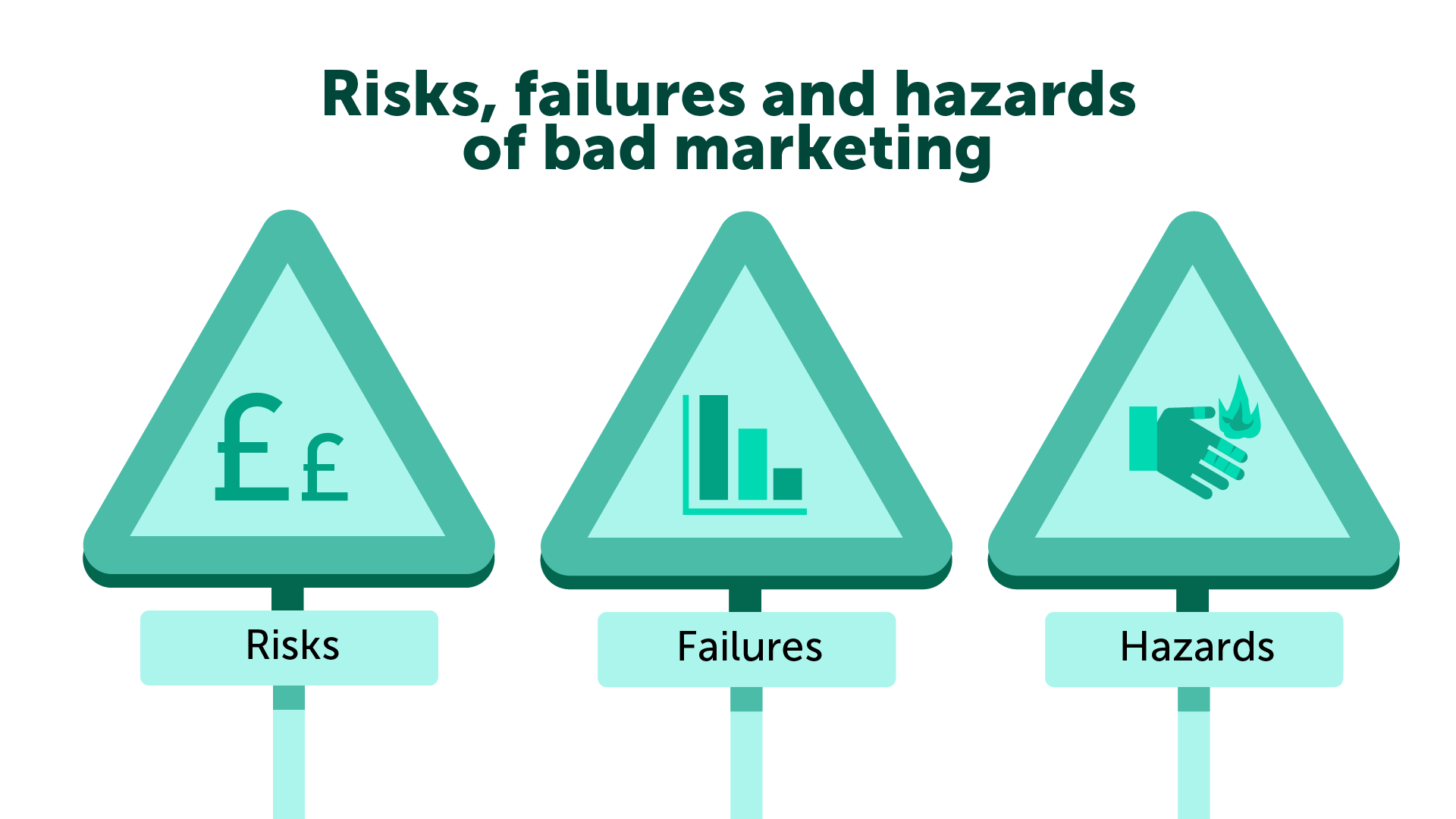
Although even the most experienced of us can stumble from time to time, experience remains the only reliable way to learn, improve and then mitigate the chances of future failures.
In other words, great marketing (and great business) is sometimes more about your ability to roll with the punches, and continuously iterate, than it is about anything else.
Seemingly overnight successes rarely happen overnight, and are usually the result of years spent refining and improving.
The risks of a failed marketing strategy or campaign can be difficult to fully grasp. Particularly if you’re a small business new to marketing.
That is why the best marketing strategies are built to be tested and adaptable, so that they can be modified as their context and environment changes.
To demonstrate the impact poor marketing can have on a business, we have put together a list of some of the most notorious failed marketing campaigns.
Please Note: We have not mentioned any small businesses in the following examples, because we don’t like to take aim at new businesses as they are building and learning.
We punch up, instead.
Peloton’s Gender Stereotypes
Source of Failure: Playing into stereotypes
The Impact: Significant drop in shares and lost customers
In 2019, Peloton released a christmas advertisement featuring a husband giving his wife a Peloton exercise bike as a gift. The wife happened to be very slim. Unfortunately for Peloton, many viewers perceived this advertisement as playing into gender stereotypes.
As a time when the female body empowerment movement was gaining more traction, the advert went down very poorly. As a result, Peloton’s value went down by $1.5bn pretty much overnight and shares dropped 9% by the end of the first day alone…and by another 6% by lunchtime the following day.
This advert failed simply because Peloton failed to understand their audience and cultural sensitivities that were especially prevalent at the time of release.
Bloomingdale’s Date Rape Advert
Source of Failure: Oversight and carelessness
The Impact: Dissatisfied customers and damaged brand
In 2015, Bloomingdales launched an advert that featured a man staring at a laughing woman, with the caption reading, “Spike your best friend’s eggnog when they’re not looking.”
Yikes. To say that this was a poor choice of words would be an understatement.
Needless to say, customers were far from happy with this advertisement. Which damaged the company’s brand image significantly.

Pepsi’s Kendall Jenner Advert
Source of Failure: Approached sensitive subjects carelessly and out of touch with public opinion
The Impact: Customer outrage, lost customers, and diminished brand
Having mentioned Pepsi, the famous Kendall Jenner advert launched by Pepsi can’t go unmentioned.
This is an example of a marketing blunder that seems to be becoming more common. Or at least is gaining more visibility in the media.
In 2017, Pepsi made a misguided attempt to connect with political activism in their advertisements. In an advert starring Kendall Jenner, Pepsi featured a group of young people protesting in the streets.
The subject of their protest or rally is ambiguous, with generic picket signs being held up reading “Love” and “Join the Conversation”.
Kendall Jenner leaves a photoshoot to join the rally. The advertisement concludes with Kendall Jenner handing a police officer, who is blocking the path of the rally, a can of Pepsi.
This advert attracted a lot of negative attention and anger, as Pepsi was accused of leveraging social justice movements for corporate gain.
With many modern businesses choosing to take political stances on important subjects, it is crucial that these subjects are approached with authenticity and appropriate gravitas.
Using a social movement in an advert designed to sell a product or service is a very dangerous line to walk. In fact, it should be carefully considered and reviewed before it’s embarked upon.
What Do These Examples Prove?
All of the examples listed above share one thing in common—they were needless.
Although it is inevitable that mistakes will be made from time to time, all of these failures could have been avoided with the right research, analysis, and insight on the part of the marketing teams responsible.
Effective, experienced, and careful marketers can spot a political landmine from a mile off, have taken the time to understand their audience, rely on data insights, and know from experience the level of risk involved with each venture.
We think that the core issue with all of these campaigns is that they fail to address long-term goals, fail to know and connect with their audience, and fail to establish their company identity. When brands try to please everyone, they end up pleasing no one.
With the right marketing partner, you can mitigate these risks and ensure that every step your business takes is considered, clear and aligned to your long-term goals.
Next chapter:
Signs You May Want a Marketing Consultant
